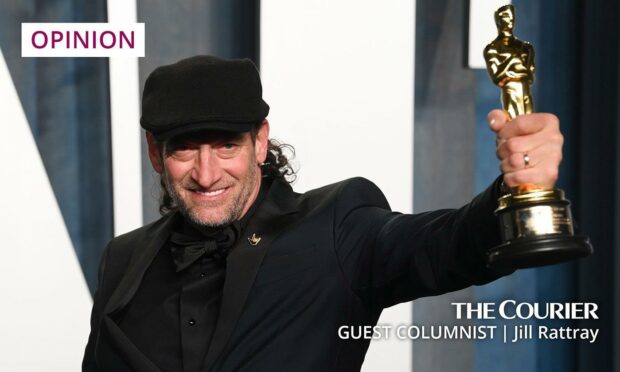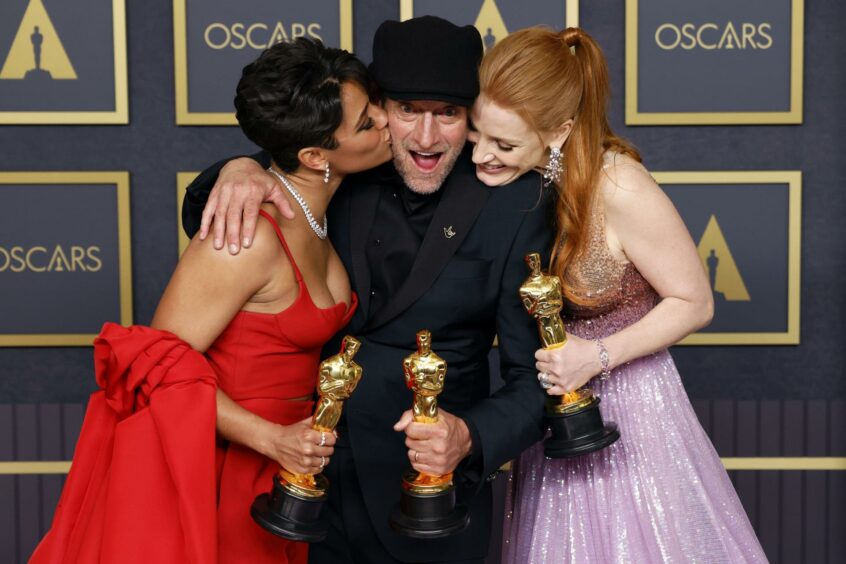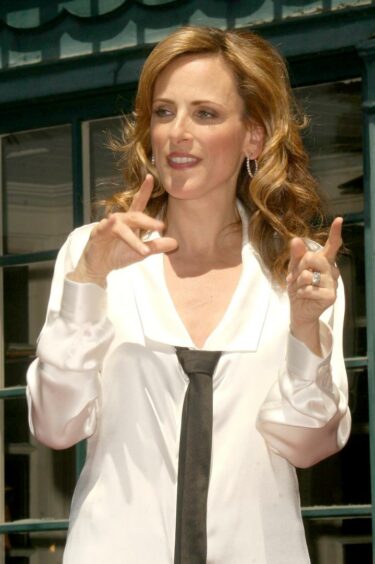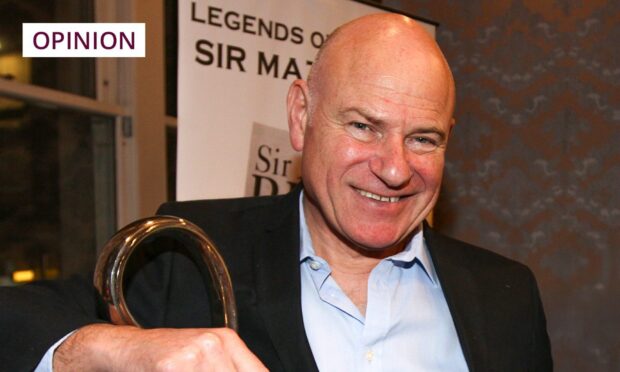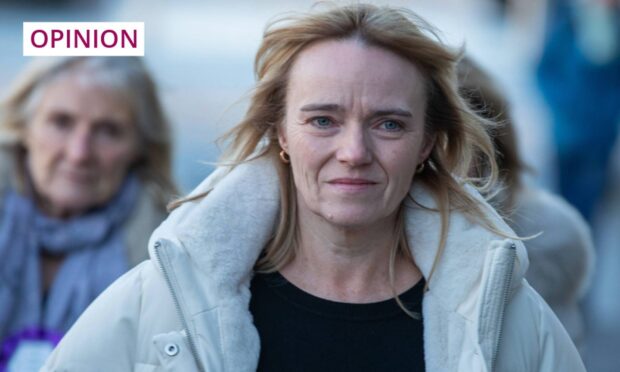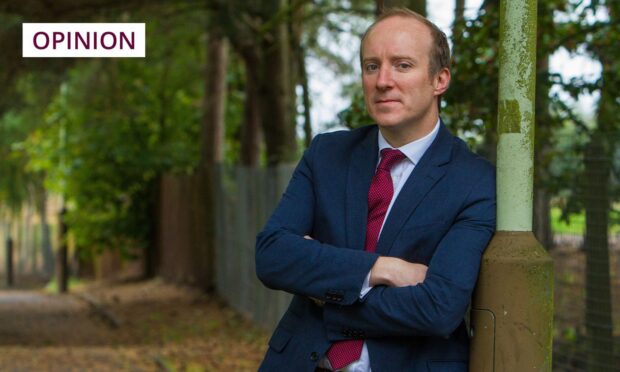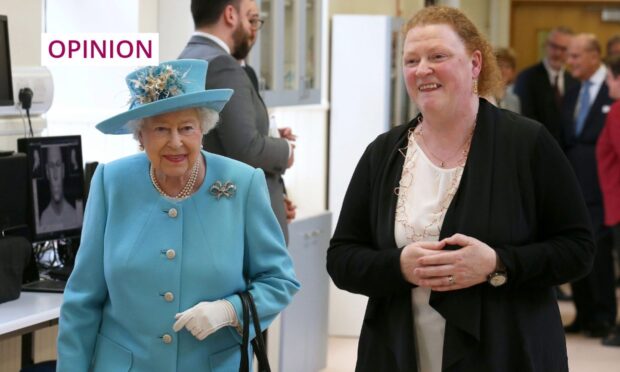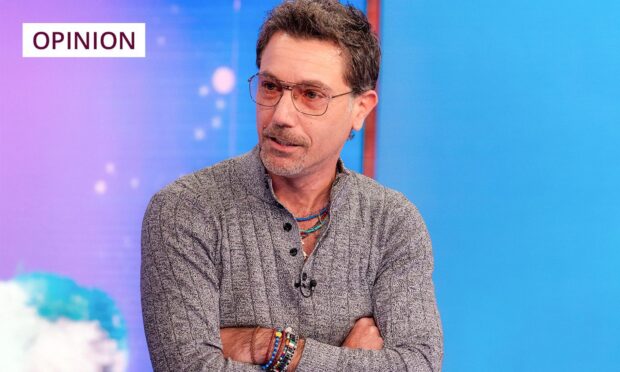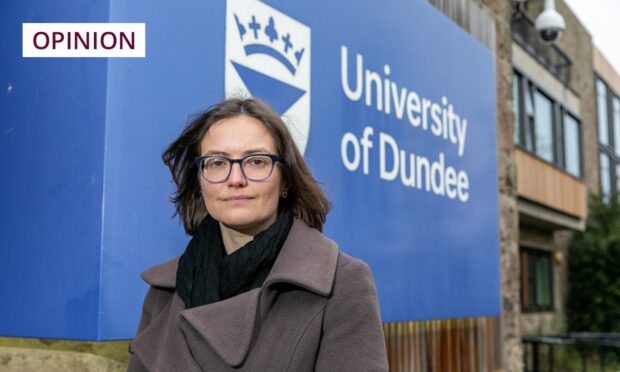One of the highlights of the Oscars this year was when Troy Kotsur won for Best Supporting Actor – and paid tribute to the “disabled community” in his speech.
Kotsur, 53, is only the second deaf actor to be awarded an Oscar. This time for his work on CODA, a film about the child of deaf parents
He may have been an unfamiliar name to many people. Not to me.
He had a recurring role on an early noughties show called Sue Thomas FBEye, about a deaf FBI agent. I’ve also seen him in guest roles on shows like Criminal Minds and CSI: NY.
So for 20-odd years Troy Kotsur has been working in smaller roles, only to become an Oscar winner in his first major part.
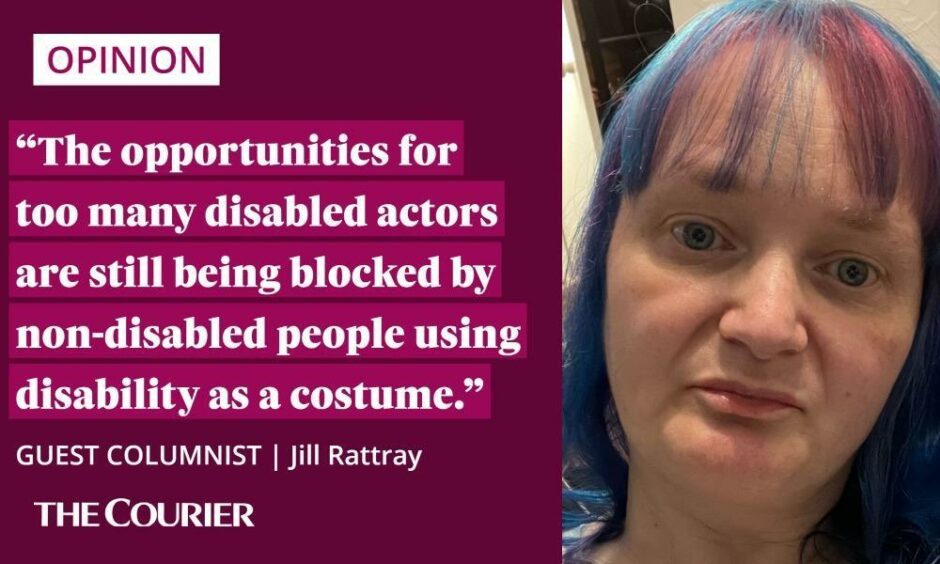
And he’s not alone. Marlee Matlin, who is also deaf, won an Oscar in 1986 for her first major role. Ali Stroker, who uses a wheelchair, won a Tony award in 2019 for her performance in Oklahoma.
In the UK we have actors like Ruth Madeley, who was born with spina bifida, and Arthur Hughes, who has radial dysplasia.
Both were outstanding as the leads in the recent BBC drama Then Barbara Met Alan.
Tylan Grant, who has Asperger’s Syndrome, has been killing it on Hollyoaks for several years now.
I could use up my word count listing the disabled actors I see in small roles or generating their own content for sites like TikTok and YouTube but you get the idea.
And yet time after time they’re overlooked for major leading roles in favour of non-disabled actors practicing disabled mimicry.
Why is that?
Same old reasons, none that make sense
There are three basic reasons still used and they’re all inherently nonsense.
The first is ‘we need to see them when they’re non-disabled’.
In that case change your script. And if it really is necessary then find a disabled actor who can do both, or use CGI.
Doctor Who spin-off Class had a storyline where a paraplegic was cured by alien tech, and they still cast Shannon Murray, who is a paraplegic.
Excuse number two: ‘we auditioned both disabled and non-disabled actors and we just chose the best actor for the role.’
No you didn’t. Because there is no way that someone pretending to have a disability is ever better than someone who is disabled.
What they often are is better at conforming to myths and stereotypes, like Freddie Highmore in The Good Doctor. He acts like a glaikit seven year old, unlike me, or any other autistic adults I know.
The playing field between disabled and non-disabled actors is not level.
The US show In The Dark was criticised for casting Perry Mattfield, a sighted actress in the lead role because the character is blind.
As if you need more reasons to love #TheGoodDoctor 💙 pic.twitter.com/9HEBwFf9of
— The Good Doctor (@GoodDoctorABC) March 29, 2022
They gave the defence of just hiring the best actor, but also highlighted that Mattfield had impressed them with her commitment by learn how to use a cane.
How does a blind actress compete with that?
They can’t go that extra mile because this is their lives.
Troy Kotsur won role, despite studio hopes for non-disabled star
And then there’s the last excuse: ‘we need a big name star’.
That’s what the first studio told CODA writer and director Sian Heder about the actor who was to play Frank Rossi – the role that eventually went to Troy Kotsur.
Marlee Matlin, who was already cast as Jackie Rossi, threatened to walk if a hearing actor was cast.
Heder agreed and they stuck to their guns even when that studio pulled out.
Fifty-nine awards later, including three BAFTAs and three Oscars, and that statement just sounds ridiculous.
Marlee Matlin said in 2017: “Disability is not a costume. If a ‘known’ hearing actress had played my first role where would I be?”
And she’s right.
Who are we not seeing because Eddie Redmayne was cast in The Theory of Everything (because we had to see Stephen Hawking before he was disabled)?
Who are we not seeing because Freddie Highmore was “just the best actor” who auditioned for the lead role in The Good Doctor?
And who are we not seeing because Joaquin Phoenix was cast as the quadriplegic lead in Don’t Worry He Won’t Get Far On Foot because the studio wanted a big name?
We’ve come far in the past few years. The proportion of non-disabled actors playing disabled characters is down from 95% to 80%.
But success stories like Troy Kotsur are still far too rare and too many disabled actors are seeing their opportunities blocked by non-disabled people using disability as a costume.
- Jill Rattray is a disabled rights campaigner, originally from Dundee and currently living and working in West Lothian.
